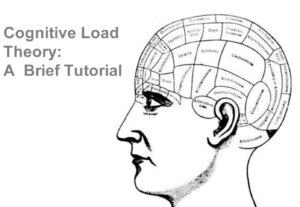 Ever been to a lecture or a seminar where information came at you so hard and fast you thought, “Stop! I can’t keep up!”
Ever been to a lecture or a seminar where information came at you so hard and fast you thought, “Stop! I can’t keep up!”
It’s a common experience for most people. The ability for our brains to process information is pretty extraordinary, but it has limits. We experience information overload the way a lot of computers do (although they improved a lot since the mid-1990s, while our brains are still similar to our ancestors 50,000 years ago).
From a cognitive perspective, there are three broad ways the brain processes new information:
- intrinsic, the level of difficulty associated with learning or understanding information relative to a person’s natural abilities
- extraneous, the manner in which information is presented. If it’s hard to understand, the brain uses more energy trying to decipher it than committing it to memory
- germane, the scheme or pattern that people develop to understand or execute something. When instruction is new, it is best to limit the amount of new information and focus instead on ensuring learners fully understand the information already available
Dr. John Sweller, a cognitive psychologist with the University of Adelaide in Australia, has studied a lot on “How Information Becomes Long-Term Memory.” He calls the amount of information people can understand in any given situation a cognitive information load. Through his studies, he has come up with five major factors that influence how much information the average person can remember:
- Information can only become useful to a person if it becomes a long-term memory
- Most people learn new information by imitating what other people do, listening carefully to what they say, or reading what others have written
- A lot of new information is learned through problem-solving but people don’t get to do that often
- The opening to process new information is limited; most people can only process three new items of information every 20 seconds
- Once new information becomes part of long-term memory, it can transform people and make them capable of doing things that were not possible for them before
Seven ways to spur lasting memories
As communicators, the challenge is to help and encourage people to file your information into their long-term memory. Luckily, there are some techniques that can help you do that:
- Provide information by the spoonful. Organize information into easy-to-follow and understandable segments. Let people use less time deciphering and understanding it and more time making it applicable to them and committing it to memory.
- Show examples. Research by Sweller shows learners who had examples to learn from were more likely to see the applicability of the information and were able to apply it later and solve more problems successfully.
- Don’t be redundant. If you’re saying the same thing as what appears on a slide, either get rid of the slide or change your spoken information.
- Avoid splitting someone’s attention. Extra information, like a graph or diagram, should be strategically placed to break up text or a lecture while supporting the information you need to share right now.
- Speak about the simple stuff; put the complex stuff in writing. Speaking or showing a video is a brief affair, so put your simple information into it. For the complicated stuff, provide written copy so a learner has something to refer back to when they need it.
- Provide a full experience in your presentation. Present information that encourages your audience to hear, feel, see, and even taste and smell your message. It can be a bit of a challenge, but any time your message appeals to a variety of human senses, the greater the chance of understanding it and committing it to long-term memory.
- Force memory recall. Rather than do all-day seminars, plan multiple-day sessions in a progressive manner to force learners to recall previous information while introducing new aspects. Many studies on cognitive information load find forced memory recall significantly enhances long-term memory.
In fact, stop reading this blog right now and come and read it again a week from today.